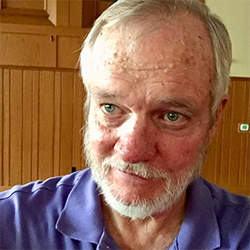Train your buys, train your supplies, train your trip size and avoid urban demise… Good training is the prize.
Most of us have stalled in traffic, edging forward a car length or two per minute and glanced up at a train rattling past on its elevated track bed, filled with commuters reading their papers, gazing out at passing scenery, grabbing a quick nap, calling their spouse on the phone or — in this era of massively defunded transit — clinging to overhead straps in a standing-room-only crowd.
Variations on the locomotive-pulling-cars arrangement include, among others, trolleys, monorails, the Elon Musk hyperloop, the Swiss autotrain that transports people in their cars upon flatcars, and airport trams ferrying passengers to loading gates.
Using technology such as linear induction, in which a magnet on a train moves along an electrified rail, the force is produced by a linearly moving magnetic field acting on conductors in the field and levitating the vehicle, producing a frictionless, smooth ride. Trains can be made to go hundreds of miles per hour. Given their ability to move unimpeded into urban centers —unlike airplanes which must locate on remote fringes — trains can deposit passengers much closer to their in-town destinations.
High speed trains are thus very competitive with airlines on short hops of 500 miles or less.
And — this is an often overlooked asset of trains — their sturdy construction affords much better survival odds in a crash. To paraphrase a famous quote: “If you in a train wreck, there you is. If you in a plane crash, where is you?”
In this pandemic-afflicted era, trains are not perceived as good candidates for transporting masses of people. Indeed, areas with the highest infection rates are those like New York City, which moves millions around its boroughs crammed into subways cheek by jowl — a coronavirus paradise.
But a little known (not to mention used and funded) aspect of train commuting involves adding cars and running trains twice as frequently, which can thin crowds to a manageable level.
And the cost is significantly less, when considering inter-city travel, than adding more airplanes to a route. The latter must be fully crewed with pilots, co-pilots and attendants on each flight and must deal with inclement weather — a condition that rarely affects trains. Trains usually have only an engineer, brakeman, and conductor, with dining car and pullman staff only on long distance routes.
But the most salient feature of trains is the tourism potential they embody. Europe is packed with trains — many of them high-speed — that connect its many tourist destinations. Rome, Paris, Amsterdam, Munich beer halls, the Swiss Alps, Barcelona, Scottish castles; during tourist season they are filled to overflowing with crowds spreading out from stations to drop their custom on local restaurants, hotels, guided tours, etc. in a major boost to those local economies with found money.
That’s right. “Found Money.”
Found money flows into a local economy when its spenders live and work elsewhere, adding dollars to the tax base without unduly stressing the services. No schools, hospitals, welfare systems and municipal government structures — excepting police, fire, OK-maybe hospitals, that are required for local dwelling taxpayers.
It’s a pity American authorities haven’t twigged to this fact.
Found money.
Brought to our shores by tourists the world over who have been inundated with pop culture. (A few years ago I visited Norway, where I was amazed to learn they speak better English than we do, and was told they picked it up watching American TV programs.)
What if, in a positive effort to restore the economy from the current unpleasantness with infrastructure projects, we dedicated some of those billions to creating high-speed rail service to all points within say, 25 miles of proven tourist destinations?
High-speed rail requires sophisticated trackbeds, reworking crossings to go over or under the tracks, extending electrification to remote areas, building stations, buying and staffing rolling stock, PR and loss-leader type promotions to kickstart the moribund tourism scene into a flood of international visitors, upgrading hotel and bed and breakfast and youth hostel availability, developing a Department of Tourism whose budget incentive is tied to the number of repeat visitors achieved.
What if we set about constructing this system, this found money sump, with the same dedication given to our impressive Interstate Highway Network?
What if a found money tax went into a special fund used to develop and maintain the system, including busways, trolleys and taxis, hotels and campgrounds, bike and hiking trails and parks — all of which could borrow from it as needed?
What if everything were phased in according to a master plan, with underserved and impoverished areas getting first crack at available funds, and an orderly growth pattern in a pay-as-you-go system was adopted?
Wouldn’t that be something? Found money and setting up a system to harvest it continuously... Oh, and I just thought of something: Another type of train is the miniature ride such as the one on occasional Saturdays in Conyers Equestrian Park. The trains are scale models with 16-inch tracks, locomotives and cars large enough that people can ride on them at about the speed of an urban scooter.
What if such a system were installed on Peachtree Street, scaled up slightly to a 24-inch wide track operating in a bike lane right of way? It would connect downtown, midtown and Buckhead with slow moving cars, covered to keep out bad weather. A no-frills fun ride that tourists would love to take their kids on. Wouldn’t that be a toot?
The DESIGN CONSUMER: Jeff MacKenzie examines issues of design that citizen consumers use.




